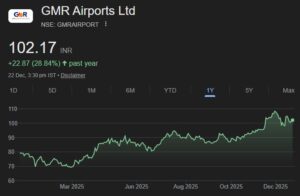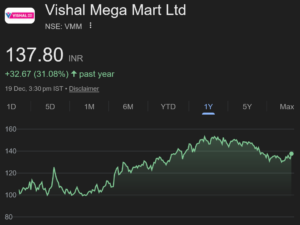
The first sign that something, somewhere would go wrong came when George Soros, the legendary trader who is presently in retirement mode, surfaced to warn the World that we are likely to face a crises similar to the one seen in 2008 (if you are a young-timer who has never seen the 2008 crises, you must watch the youtube videos of how the stock prices melted into nothingness before our very eyes).
George Soros’ grim prognosis was followed in quick succession by some eminent economists in the Royal Bank of Scotland sending the dramatic warning to investors to “sell everything”. They added that “danger is lurking out there for every investor” and “this looks very much like 2008”. “This is about return of capital, not return on capital. In a crowded hall, exit doors are small” the eminent economists said in a chilling tone.
Predictably, the stock prices have reacted adversely to the doomsday prophecies of the experts and have plunged in a savage manner. In the past six months, the Nifty has lost 12.70%. The loss in just the last week is 2.20%. Individual mid-cap stocks have obviously lost much higher percentages of their worth in the carnage.
Understandably, this situation has sparked panic amongst investors as is evident from the chatterings of the punters at MMB.
“This kind of market is best described as maarkaat. Better remain inside your house and lock the gate” @atushik said.
“Breather .. at last market is closed today ..” @venhypa added with a sigh of relief.
“Modi`s accha din was only for a few months!” @money_maker_1 complained.
“All because of banning Jallikattu .. Bull has gone to sleep like Kumbhkarnan…He wil wake up after 6 months only …” @venhypa said in a desperate attempt to evoke laughter from his fellow punters.
This is where Howards Marks, the billionaire founder of Oaktree Capital Management, comes in. His periodic memos provide clear insight into what is happening in the stock market and also offer valuable guidance on what investors should do.
In an earlier memo (“It’s not easy”), Howards Marks pointed out that we should always keep in mind the difference between “risk” and “volatility”. He explained that the fact that a stock is “volatile” and plunges to a 52-week low does not mean that it is at “risk”. In fact, it is the other way, he said. A stock which is languishing at a 52-week low is actually a “safe” or a “risk-free” stock because most expectations of investors have been drained from it and it has little downside.
In his latest memo titled “On the Couch”, Howards Marks rubbishes the fear expressed by George Soros and the RBS economists that there would be a re-run of the 2008 crises. “So what about the likelihood of another 2008-style crash? The bottom line for me is that a rerun of the Global Financial Crisis isn’t in the cards” Howards Marks says in an authoritative tone and proceeds to give three cogent reasons for his analysis.
Howard Marks also explains the reasons why the “pendulum” of investors’ sentiment swings from “flawless” to “hopeless”. In one moment, investors are extremely bullish and greedy, in the other they are extremely bearish and fearful.
Howard Marks offers a “prescription” to deal with this “bi-polar” mentality of investors. He says investors should do the following:
(i) Understand the psychology of investors and why markets’ are irrational;
(ii) Control your emotions; keep optimism and fear in appropriate balance;
(iii) Control your circumstances and the dependence on funds;
(iv) Be a contrarian and take advantage of other investors’ emotional swings. Become more optimistic when others become more fearful, and vice versa.
At the end of the treatise, Howard Marks makes three critical points:
(i) The change in investor attitudes have created investment opportunities where they hadn’t existed just a few months before. Some opportunities are out of proportion to the change in fundamentals;
(ii) Nothing has changed in terms of fundamentals. The difference in stock prices lies in the perspective investors are bringing to their decisions and
(iii) The present crises situation is “a time” to buy though it may or may not be “the time” to buy.
So, now you have to stop feeling despondent and get ready to take advantage of the fall in stock prices by grabbing top-quality stocks at bargain basement prices!






Couldn’t agree more. It is a time to ‘buy’.
I wish Howard Marks is right.. I have began buying but there I am wondering where is the difference between ‘a’ and ‘the’…by the time ‘the’ comes, it can be 12-18 months away, as was the case in 2008, when the prolonged pain lasted all the way to 2009 and beyond….I might run out of patience or capital or both, in the meanwhile…but the whole theory is , this is no 2008 and that is what i have to keep on telling myself
It’s still not the right time to buy..this pressure could last several months with a few more crashes along the way till commodities pick up.
well thought out & very well written… congrats
Nothing new every rise has a fall and every fall has a rise.With age of IT cycles has become shorter.Now a days if excess supply is 5%. Market may go down by 30% and if excess demand of 5% it can go up 30%.This is result of modern excessive trade in derivatives .5% pressure and 25% speculation create deadly cocktail if market pressure. Similar may be uptrend..
Kharb sir..pl reply reg Axis, in the previous Ramesh Dhamani chain…thx
Arjun – Thoroughly impressed. Howard marks memo just came out and you have already read and synthesized that!! You are at the cutting edge of market and information!! Hats off…
Hey ,
Even I bought some stocks last week, but it seems the time is not yet to buy, we should preserve capital for the meltdown. Off course we cannot time markets but going by the P/E values most stocks are still expensive.
I have a question ? who is Howard Marks ? Has he invested in Indian markets